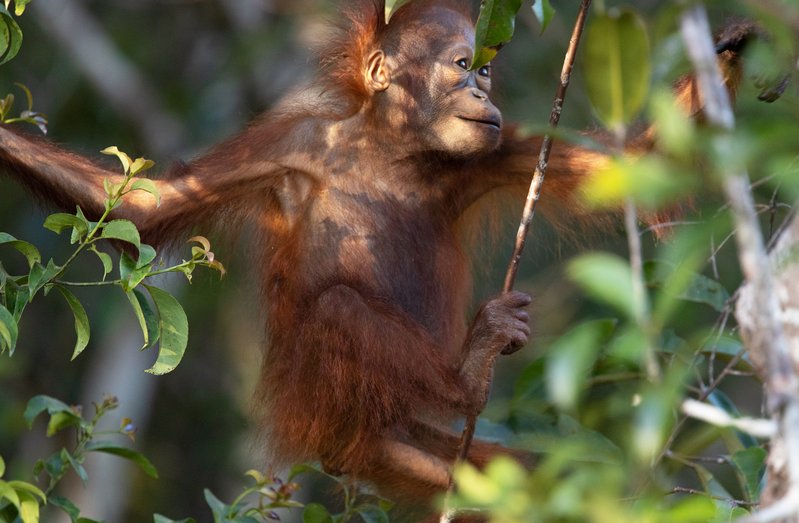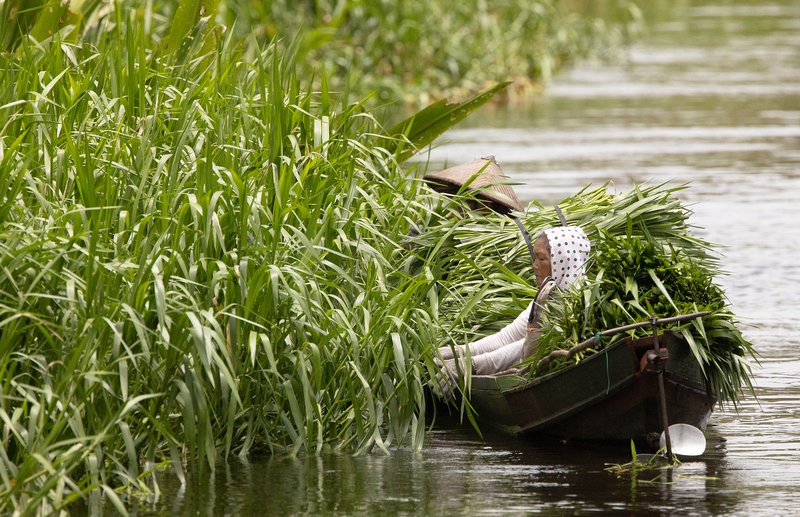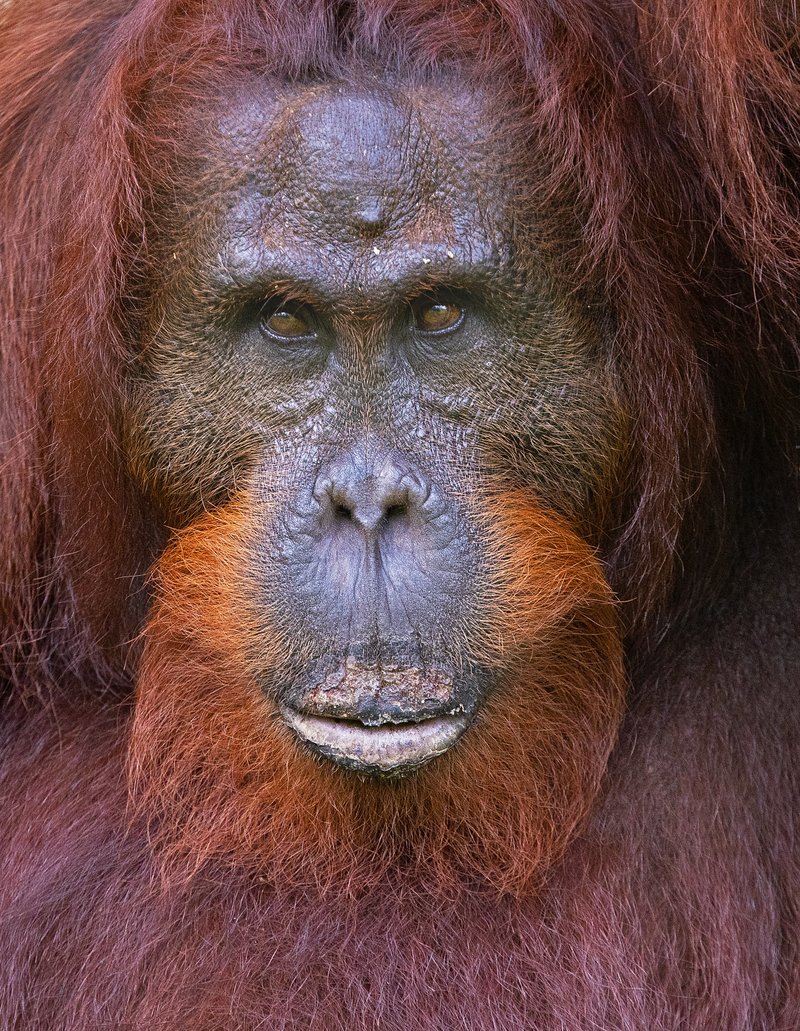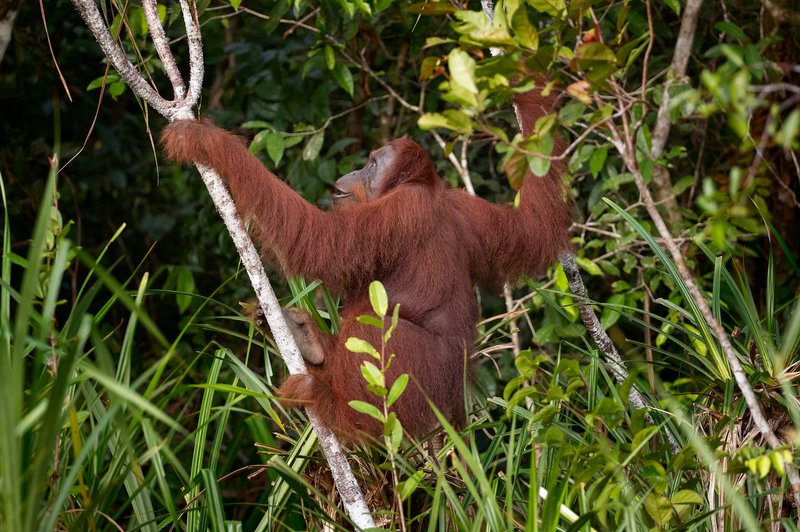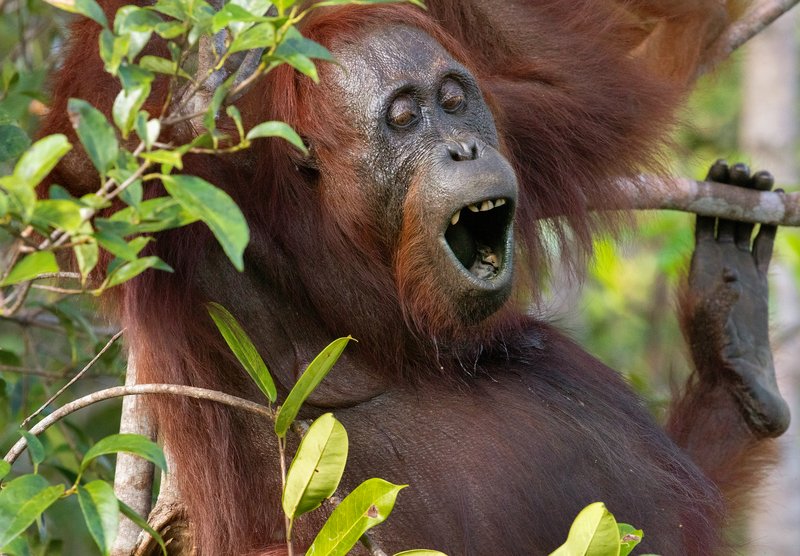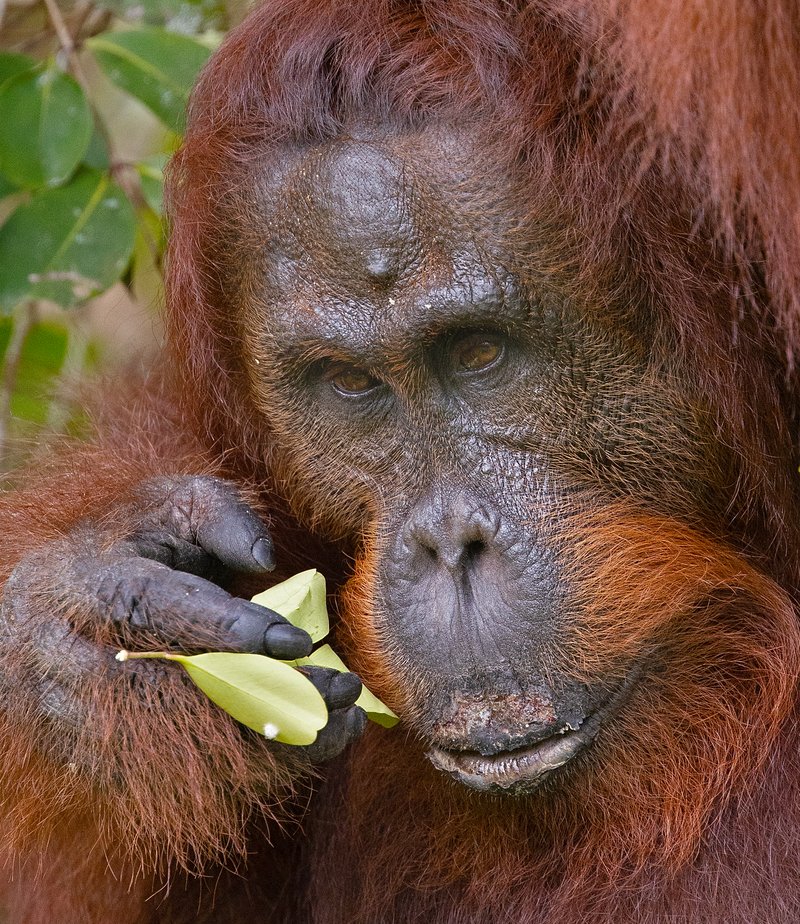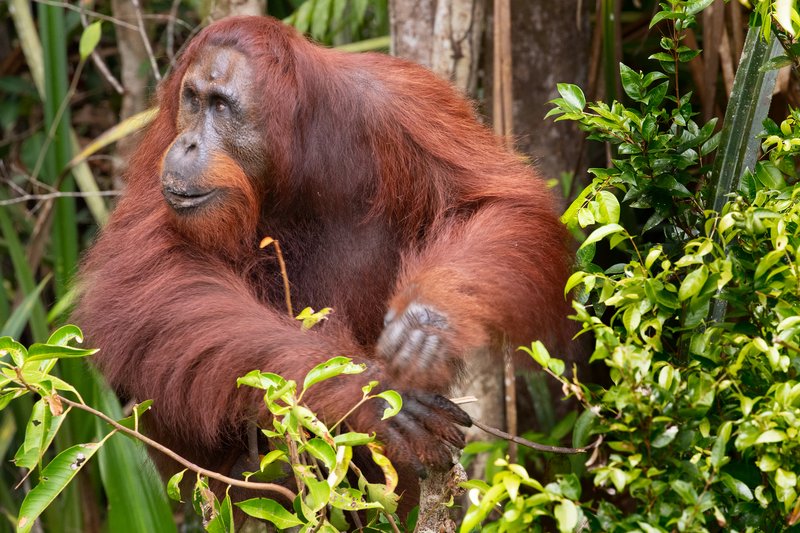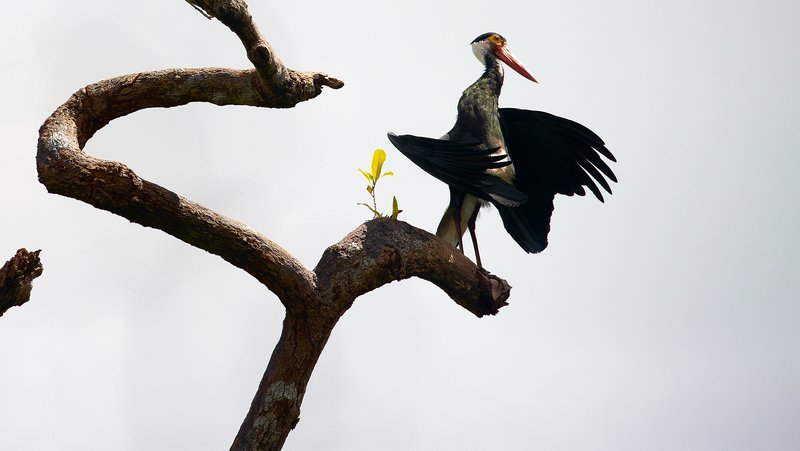Bornean Orangutan
Orangutans make a variety of different sounds. Adult males make what is referred to as a ‘long call’, a sequence which usually starts with a few softer barking notes, then changes into a long series of heaving roars which gradually lower in frequency and taper off into bubbly drawn-out groans. It is thought these ‘long calls’ serve not only to attract females, but also to identify individuals and the context of the caller.
Thanks to Orangutan Foundation International (OFI) for allowing me to use information from their site for my captions.
Along Borneo’s Rivers
Borneo is the third largest island in the world, behind only Greenland and New Guinea in square miles. The ownership of the island is divided between Indonesia, Malaysia and Brunei. Much of the island is covered in dense rainforest with an average rainfall exceeding 150 inches. It is drained by navigable rivers that provide access for interior settlements, commerce and tourism.
We visited two locations during the last week of September and first week of October in search of Bornean Orangutans. This was our first international trip since the relaxing of Covid restrictions and a trip that had been postponed numerous times since originally scheduled in 2020. Our first stop was Pangkalan Bun, the capital of West Kotawaringin Regency in Borneo, Indonesia and the main gateway to Tanjung Puting National Park. This is where Dr. Biruté Galdikas (and former spouse Rod Brindamour) established Camp Leakey, their research base, in 1971 along the Sekonyer Kanan River. Dr. Galdikas is to orangutans what Dr. Jane Goodall is to chimpanzees and Dr. Dian Fossey was to mountain gorillas.
We chartered a klotock, a noisy spartan houseboat, for five days to float the park’s rivers to look for orangutans. During the high season, June-August, there are many klotocks on the rivers because there are three orangutan feeding stations within the park. At regular intervals, park rangers provide food on feeding platforms to orangutans that were former pets or captive animals and subsequently released into the wild. These feeding stations help these orangutans transition to the wild, provide a way for tourists to easily view the animals and provide an additional source of income for the park.
Although we had permits to visit feeding stations, we chose instead to spend our time searching for orangutans in the wild that would exhibit natural behaviors. Due to habitat destruction and poaching, the population of Bornean Orangutans has declined more than 60 percent since 1950 and is now critically endangered.
Our five days on the river dwindled quickly. Our flight to Pangkalan Bun was delayed six hours, our return flight was changed to earlier on our final day and on our second evening, our propeller was damaged when we ran over a submerged log, necessitating a rescue mission from town that took most of the next morning to repair. Fortunately, it coincided with 12 hours of rain, so we wouldn’t have been able to photograph anyway.
Our klotock had a crew of four: a guide, a cook, a captain and an assistant captain. They all lived below deck. On deck was a mattress, a table for dining and little else. There were two toilets down five very steep steps and a cold shower. At night they hung a mosquito net above the mattress. There was electricity and occasional power for charging camera batteries and electronics. Every day, we’d cruise the rivers from sunrise to sunset searching for orangutans while avoiding other klotocks that were heading with their guests to and from feeding stations.
During our three full days on the rivers, we saw about 15 orangutans and rarely were disturbed by other klotocks, even when we had close encounters with female orangutans and infants. Other boats and guests seemed more interested in getting to their feeding station appointments rather than spending time observing orangutans in the wild.
Our second destination was in Sabah, in the Malaysian area of Borneo. There are no international flights from Pangkalan Bun to Sabah, so this necessitated an overnight in Kuala Lumpur after a stopover in Surabaya. In Surabaya, we arrived at the domestic terminal and learned that to reach the international terminal required a taxi ride. Fortunately, a friendly security guard guided our transfer. After our overnight stay at the airport hotel in Kuala Lumpur, we learned that the train to the departure terminal did not run in the pre-dawn hours, so it also required a taxi ride in order to make our 6 a.m. departure.
From the time we first re-booked our itinerary for 2022, we had nine flight changes or cancellations, including many that made it impossible to meet connecting flights. Considering our limited access to communications, this proved almost as challenging as finding orangutans. All told, the trip involved nine airports, five carriers, five time zones, crossing the International Dateline and numerous crossings of the equator.
Our experiences in Sabah were much different than those in Tanjung Puting National Park. Tourism is lodge-based and limited to morning, afternoon and night safaris. Travel is in small, open-air motor boats and orangutan sightings were rare, always at a distance and deep in the jungle. It rained every day and therefore it was a struggle to photograph most days. There was abundant bird life, although most sightings were better for observation than photography. The area also is home to pygmy elephant herds, although we did not see any (not because we didn’t spend time looking). Also, our initial lodge booking was changed at the last minute as our preferred lodge cancelled the first two days of our stay to accommodate a large group. This meant we had to change lodges after two days and spend time in transit rather than photographing. We did get to see two different habitats, but it was still inconvenient and unprofessional.
It was still a great experience, as we were able to go out at night, both along boardwalks and in the boat and even without close encounters with orangutans, there was plenty to see. Fortunately, our luggage travelled with us until our journey home, when one of our bags decided to spend three extra nights in Kuala Lumpur. We were able to locate it and direct the rescue effort only because we had an Apple Air Tag safely secured in the duffel.
